Top 5 Frequently Asked Fall Protection Questions
Posted by Howie Scarboro - CEO Fall Protection Distributors, LLC on Feb 16th 2024
In workplaces covering multiple industries, the issue of fall hazards looms large OSHA mandates fall protection guidelines in 1926.502, however, are we truly safeguarding against the invisible peril that lurks at heights? What factors truly dictate the selection of an effective harness, navigating the fine line between protection and restriction? How do we calibrate height requirements to ensure both safety and operational efficiency, amidst the dizzying heights of modern industrial landscapes? And as equipment ages, weathered by the elements and the rigors of use, how do we ensure its longevity without compromising on safety?
Delving into these pivotal questions, this article aims to arm safety managers and workers alike with a robust understanding of fall protection, offering insights and solutions to the top five popular questions that address fall safety at height.
1. What Type Of Harness Should I Use While Roofing?
When it comes to roofing, selecting the appropriate harness is paramount. Roofers need harnesses that are not only lightweight and comfortable but also durable enough to withstand the rigors of working at heights. Specialized harnesses tailored for roofing applications often feature innovative elements like heat-resistant fabric and webbing, providing protection from welding activities and extreme temperatures. Additionally, harnesses equipped with built-in seats and aluminum hardware offer added comfort for prolonged suspension in the air.
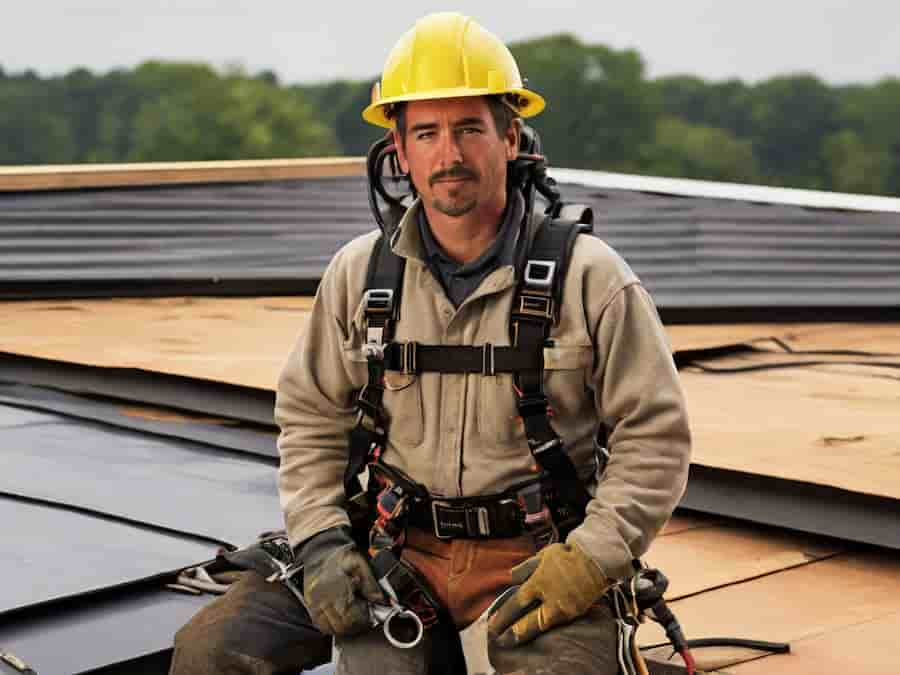
Ensuring a snug fit is essential for safety, which is why harnesses with adjustable sizing and quick-connect buckles are favored, especially for solo jobs. Consulting with safety experts and considering the specific demands of roofing tasks can help in selecting the most suitable harness. By prioritizing safety and comfort, roofers can work confidently at heights, knowing they are properly equipped to handle the job at hand. So, whether it's installing shingles or repairing flashings, the right harness is the key to success.
The Malta Dynamics B2002 Warthog Harness is a well-rounded construction harness with good size adaption for Lg-XL workers.
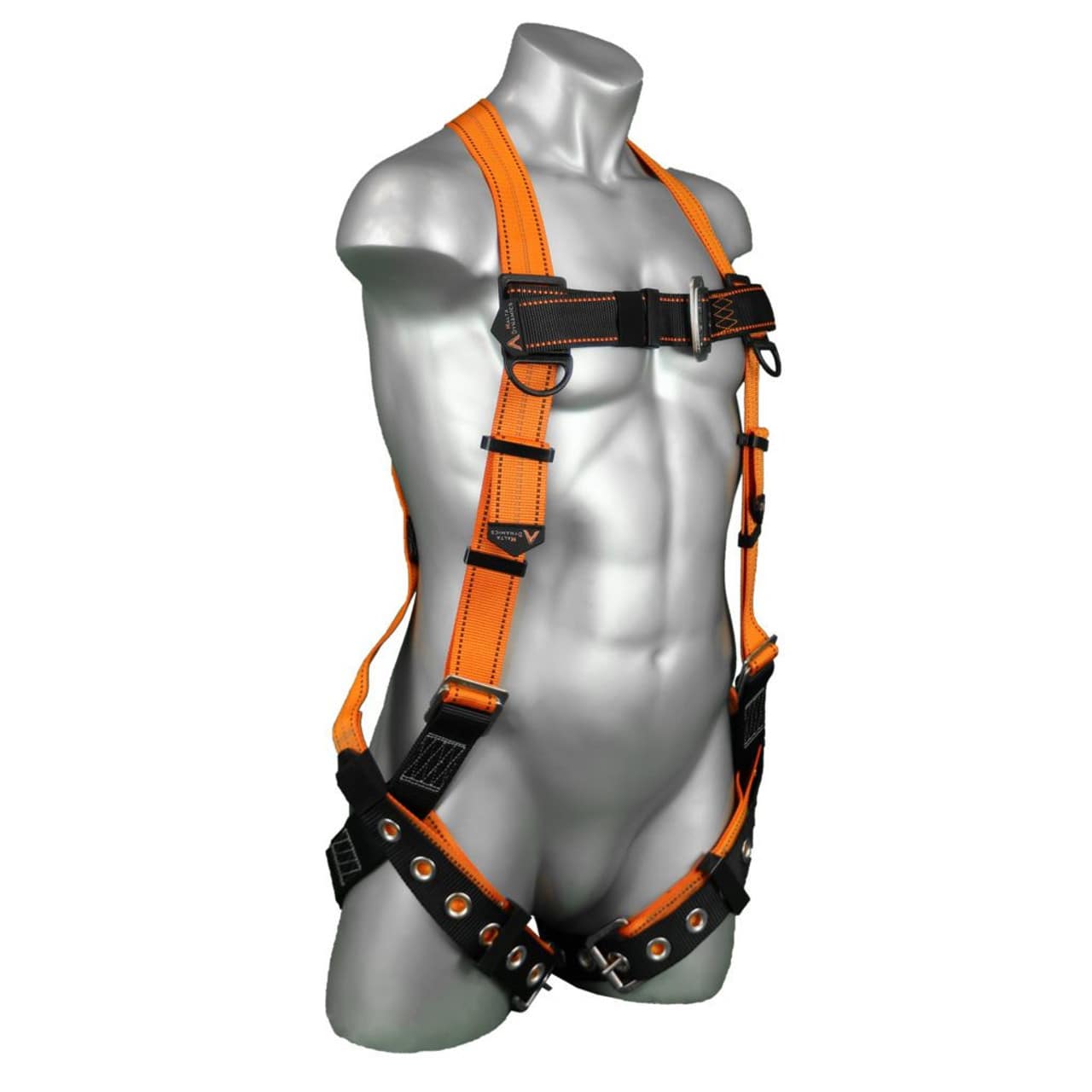
2. What Are the Height Requirements for Fall Protection According To OSHA?
OSHA regulations, particularly 1926.502(b)(1), outline precise height requirements for fall protection during roofing tasks. Typically, fall protection measures must be implemented at heights of six feet or more within the construction industry, which encompasses roofing activities. Employers bear the ultimate responsibility of ensuring the presence of adequate fall protection systems, including guardrails, safety nets, or personal fall arrest systems. These measures are crucial for preventing workers from falling off roofs or elevated surfaces and minimizing the risk of accidents and injuries.
It's imperative for roofers to undergo proper training on the correct usage of fall protection equipment. Understanding and complying with safety regulations not only ensure a safe working environment but also mitigate potential hazards associated with working at heights. By adhering to OSHA guidelines and prioritizing worker safety, employers can create a secure workplace conducive to productivity and well-being.
OSHA released an informative video detailing the fundamentals of fall protection practices and equipment. This 2 hour long video is excellent training for everyone involved in keeping workers safe at height.
3. Should I Use an Energy-Absorbing Lanyard or a Self-Retracting Lanyard for Roofing?
When it comes to selecting between an energy-absorbing lanyard and a self-retracting lanyard for roofing tasks, the decision hinges on specific job requirements. Energy-absorbing lanyards are ideal for roofers operating below 17.5 feet, as they offer flexibility and shock absorption in the event of a fall. Conversely, self-retracting lanyards are better suited for roofers working above 17.5 feet, as they provide continuous tension, minimizing trip hazards by keeping the lanyard taut.
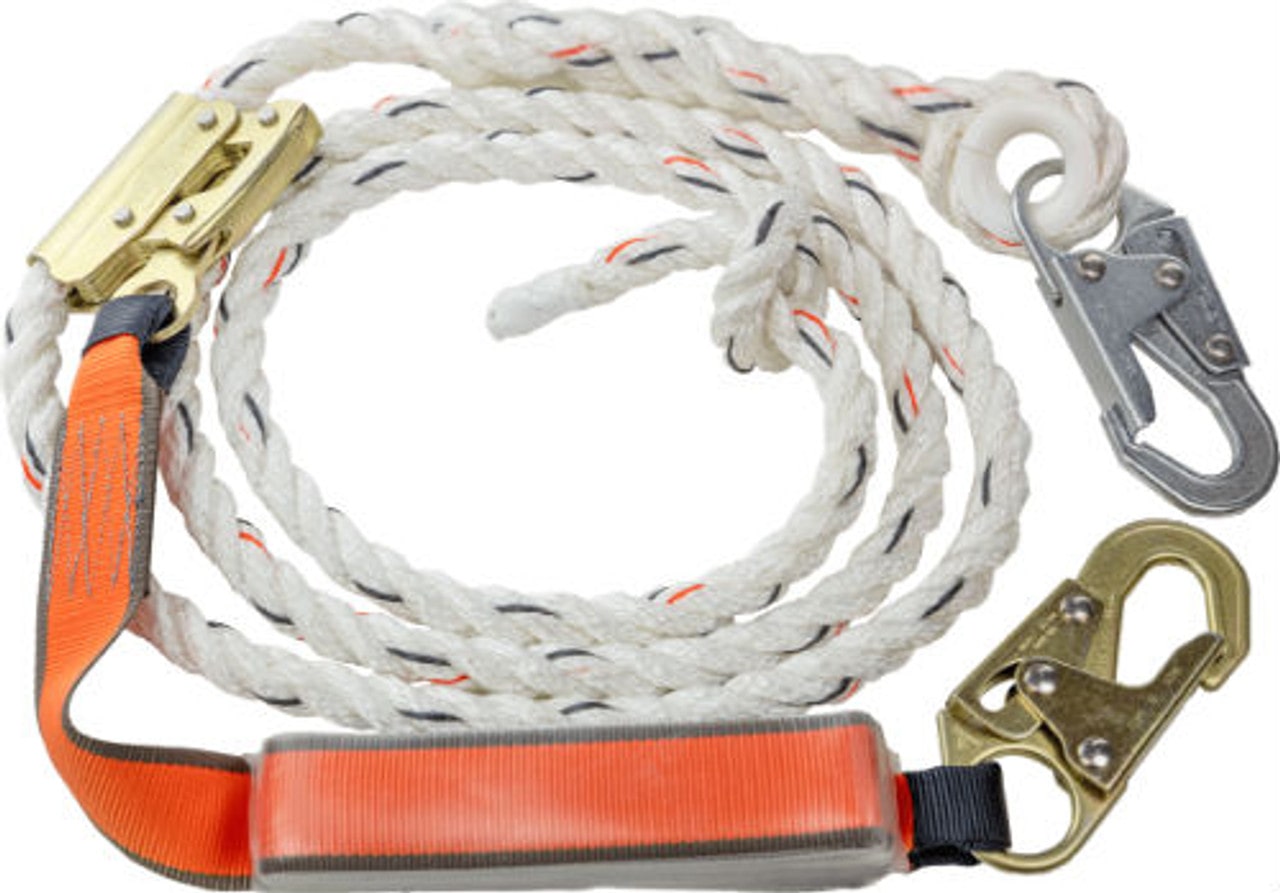
Factors such as mobility, working height, and environmental conditions play a crucial role in determining the most suitable lanyard for roofing applications. By carefully assessing these factors and understanding the unique demands of the job, roofers can make an informed decision and select the lanyard that best meets their safety needs. Whether it's navigating rooftop obstacles or maneuvering at heights, the right choice of lanyard ensures optimal safety and efficiency on the job.
An excellent example of a kit designed to keep a worker(Authorized User) safe would be the Malta Dynamics C7050 including a 50 vertical lifeline, rope grab, and shock absorbing lanyard. This lanyard is designed to reduce the impact loads imparted on the human body during the moment of impact.
4. Do I Have To Buy The Most Expensive Fall Protection Equipment?
When considering fall protection equipment for roofing, the price range can vary significantly based on factors such as harness features, lanyard type, and additional accessories. While some options may be more affordable, others may fall into the higher-end spectrum. However, the key consideration should always be safety and compliance with OSHA regulations.
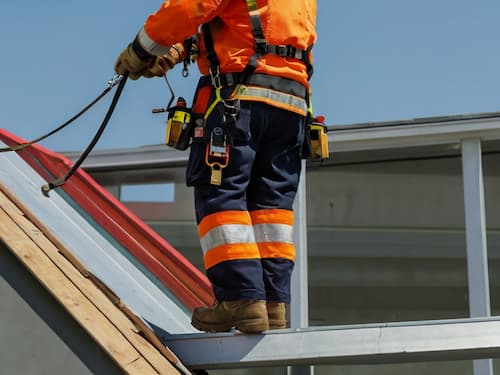
Investing in quality fall protection gear is crucial for ensuring the safety of roofers and preventing potential injuries from falls. While it may require an initial investment, the long-term benefits of reliable equipment far outweigh the costs. Employers should prioritize allocating funds for the purchase of high-quality fall protection gear as it is ultimately an investment in the well-being of their workers. By ensuring that roofers are equipped with dependable equipment, employers can create a safer work environment and reduce the risk of accidents and injuries on the job.
With all of that being said, focus on quality, not price. The lowest price and the highest priced products in the marketplace are typically not the best value versus the cost.
5. What is the Life Expectancy of Fall-Protection Equipment for Roofers?
When it comes to the life expectancy of fall protection equipment for roofers, regular inspections and adherence to manufacturer recommendations are essential. While some products may come with expiration dates, focusing on routine maintenance and inspections is critical for ensuring the longevity and effectiveness of the gear. A competent person should inspect fall protection equipment at least once a year and document the findings in an inspection report.
Roofers should inspect their equipment before each use, checking for any signs of wear, damage, or degradation that could compromise safety. Additionally, annual inspections conducted by trained personnel help identify any underlying issues and ensure compliance with safety standards. By prioritizing proper care and maintenance practices, roofers can significantly extend the lifespan of their fall protection equipment, thereby enhancing workplace safety and minimizing the risk of accidents or injuries on the job.
Conclusion
In conclusion, the safety of roofers is paramount in the construction industry, and proper fall protection equipment is crucial for mitigating risks and ensuring workplace safety. From selecting the right harness for roofing tasks to understanding OSHA's height requirements, roofers must prioritize safety considerations at all times. Energy-absorbing lanyards and self-retracting lanyards offer tailored solutions for varying working heights, emphasizing the importance of choosing the appropriate equipment for specific job requirements.
For more in-depth discussion on roofer fall protection issues, take a few minutes to read the OSHA 48 Page Construction Fall Protection Manual.
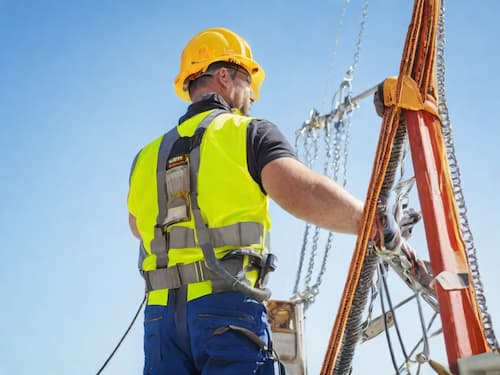
While cost considerations may arise, investing in high-quality fall protection gear is an indispensable aspect of safeguarding roofers against falls and potential injuries. Moreover, maintaining fall protection equipment through regular inspections and adherence to manufacturer recommendations is essential for prolonging its lifespan and maximizing effectiveness.
By incorporating proper care and maintenance practices into their routine, roofers can not only extend the longevity of their equipment but also enhance workplace safety standards. Ultimately, by staying informed, adhering to safety regulations, and investing in quality fall protection gear, roofers can work confidently at heights, minimizing the risk of accidents and injuries on the job site.
5 Rapid Fire Bonus Fall Protection Questions
What Are the Main Considerations When Choosing a Fall Protection Harness?
When selecting a fall protection harness, factors such as job tasks, environmental conditions, individual wearer characteristics, and compliance with safety standards should be taken into account.
How Often Should Fall Protection Equipment Be Inspected?
Fall protection equipment should undergo annual inspections by trained personnel, as recommended by OSHA. Additionally, regular checks for signs of wear or damage are advised before each use.
Are There Specific Regulations Regarding Fall Protection Heights?
Yes, OSHA mandates industry-specific height requirements for fall protection, ranging from four to thirty feet. Employers must ensure compliance with these regulations to prevent workplace accidents.
Can Fall Protection Equipment Be Repaired After a Fall?
Some mechanical components of fall protection systems may be repairable, depending on the product and manufacturer. However, full-body harnesses and energy-absorbing lanyards exposed to a fall arrest should be replaced immediately.
What Should Employers Prioritize: Price or Compliance?
Employers should prioritize compliance with safety regulations and standards over cost considerations when selecting fall protection equipment. Investing in high-quality gear ensures optimal protection for workers and mitigates the risk of costly fines or citations.

